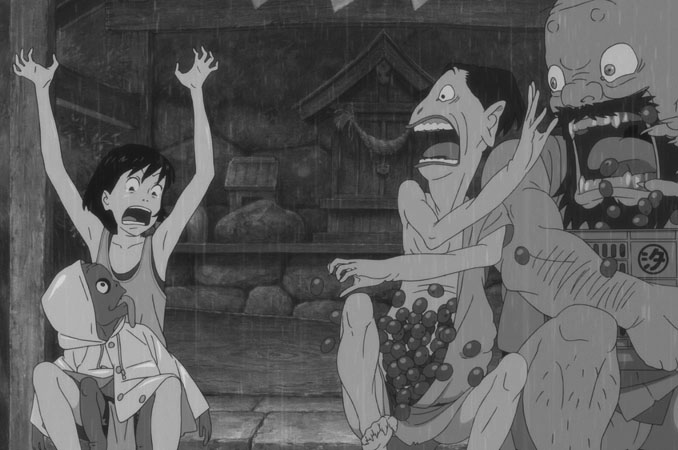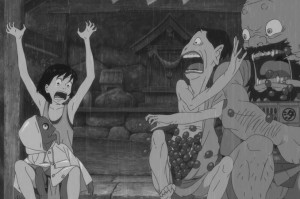Sharing the diversity of animation


Over three days in November, the Waterloo Festival for Animated Cinema (WFAC) will show off the whole scope of the animated film medium, playing movies from across the globe. Chosen for the fest were films that ranged from colourful anime with feel-good storylines, to somber depictions of the weakness of humanity.
In 2002 WFAC was just a few University of Waterloo students getting together to watch Japanese anime films. Ten years later, curator and founder Joseph Chen finds himself dealing with several international premieres and playing host to world-renowned animators and directors.
“It has always been to try and show the diversity of the storytelling and the diversity of the visual arts,” said Chen. “[It’s about the] ambition of the single animator who struck out there to do their own film, all the way to the studios who create these [films] across all the countries.”
Chen is eager for audiences to appreciate the variety of films that exist in the animation community.
“It’s a medium and not a genre,” he pointed out, noting that anything from drama to comedy to documentary has appeared in animated form.
“In terms of media production today, 22 per cent is strictly based animation. We don’t even count visual effects.”
For this year’s festival, Chen has gathered together an array of films that really demonstrate how diverse the animated film world is. “For us this is an opportunity to bring stuff here so audiences in the Waterloo Region can discover films for ourselves,” he said. WFAC is an unusual stop on the animated film festival circuit as it allows audiences to actually enjoy screenings as opposed to smaller fests that focus more on the industry side of animation.
“It is all about the fact that a very humble group of artists out there trying to tell the story in exactly the way they want to,” said Chen. “This is a beautiful form [for it].”
The Tragedy of Man
The film The Tragedy of Man, based on the poem by Hungarian playwright Imre Madach, was nothing short of spectacular. The poem is required reading in Hungary and follows Adam and Eve as they traverse history — from Ancient Egypt and Rome to the French Revolution — in search of the meaning of life after being enticed by Lucifer. Production started in 1988 and it took director Marcell Jankovics 25 years to raise the necessary funds and create the film. Yet this cinematic work is arguably well worth the wait. The long and fascinating journey of Adam and Eve that eventually leads to a grim conclusion for the future of human kind, combined with the incredible visual magnum opus that is Jankovics’ work is thought provoking and magnificent. Given the magnitude of this film it is easy to see why this director is critically acclaimed worldwide.
–Emma Baumann
A Letter to Momo.
What appeared to be an innocuously charming animated Japanese film instead turned out to be about how we deal with death when it rolls, as always, unexpectedly into our lives. I wanted happy forest sprites dancing and instead I got bitch slapped by reality. I have certain expectations when I go see an animated film. One: that it will feature many celebrities voicing cute animals. Two: That it will be funny and full of fart jokes. I do not expect that animated films will be reflections of grief. I don’t want whimsical Japanese guardian gods teaching me profound life lessons about coping with loss. I certainly do not want to be reduced to a sobbing mess when the titular Momo rises above adversity to find reserves of strength she didn’t even know she had. Oh sure, you’ll be drawn in by the rather engaging characters and an animation style that is so breathtakingly beautiful and intimate that at some points you’ll believe you’re staring at a watercolour painting. You’ll think “perhaps this is simply the heir apparent to the films of Hiyao Miyazaki.” After all, A Letter to Momo shares the fantastical elements and coming of age story that defined Spirited Away. Yet A Letter to Momo, about a young girl who is left wondering what her father wanted to write in his last letter to her, is melancholy; bittersweet in a way that is more of an adult film by its serious tone. There is plenty for the kids to enjoy — Momo finds herself protected by a trio of silly guardians sent from Above (big ‘A’ intentional) — but at the end of the day, it’s her story. It’s about growing up and dealing with pain that is far too adult to grapple with. I thought animation was meant to be big colourful fun, not a heartfelt mediation. Call me when Ice Age 5 is in theatres.
–HG Watson
Also featured at the fest
BABLEDOM: Attention urban dwellers: Babledom is a highly experimental film made up of composite shots of cities all over the world as a way of exploring urbanism. “It’s an intellectual’s look at cities and urbanization,” notes Chen.
Rainbow Fireflies: The uplifting story of a young boy who travels back in time after the death of his father, a Japanese import. This film displays the talent of director Uda Kounosuke who can also be credited with directing the popular Sailor Moon series.
Arrugas (Wrinkles): A Spanish film based on the award-winning graphic novel Paco Roca and tells the heartwarming and humorous story of the friendship of two male roommates living in a nursing home.

